Products
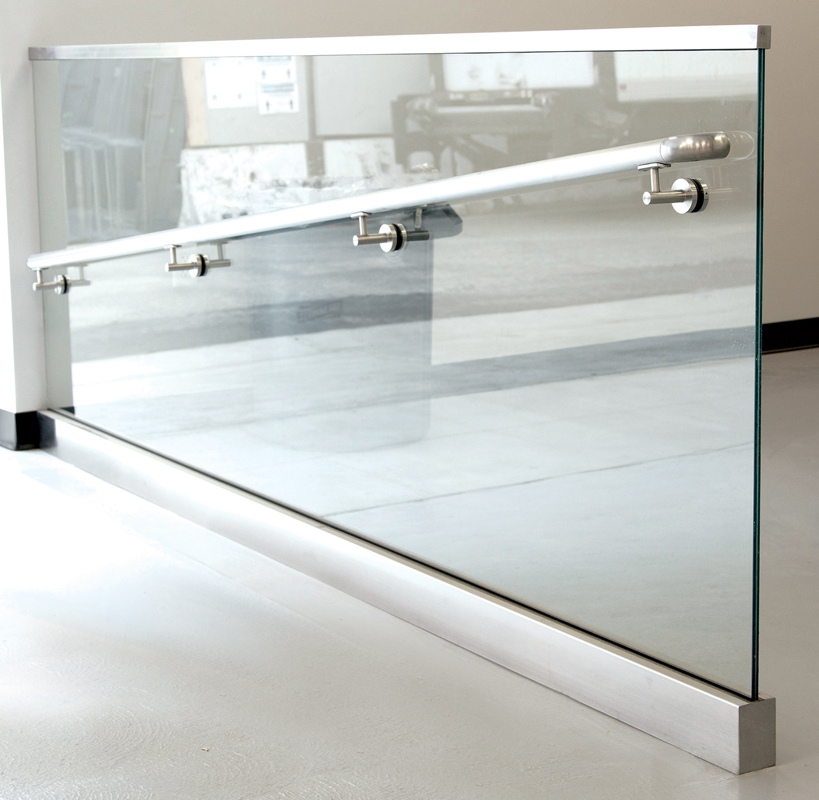
Baseshoe Systems
Product Types
Baseshoe railing systems combine structural strength and design minimalism by securing glass panels within continuous U-shaped channels. Unlike post or clamp systems, the channel fully supports the bottom edge of the glass, distributing loads evenly across the base. This provides a clean, uninterrupted line of sight and a stable foundation, making it ideal for balconies, stairs, and mezzanines.
These systems can be base-mounted or side-mounted depending on space constraints and aesthetic preference. They’re often chosen when a seamless transition is desired between flooring and railing, or when wind loads are high and full-length support is necessary. Designers favor channel systems when both safety and appearance are equally important.
Material
Laminated glass is often selected for applications where fall protection or impact resistance is critical. The baseshoe itself is made of extruded aluminum or stainless steel, designed to house the entire length of the glass panel along the bottom edge.
Aluminum baseshoes are frequently treated with powder coating or anodizing to resist corrosion and UV exposure. Rubber gaskets or compression fittings are inserted between the glass and the channel to absorb shock and ensure a tight, rattle-free fit. Drainage provisions are also built into the channel to manage water runoff in exterior environments.
Load & Safety
By holding the entire base of each glass panel, baseshoe systems provide exceptional support against both horizontal and vertical forces. The even distribution of load minimizes stress points, making the system more durable under impact or environmental stress like wind or crowd pressure.
Safety enhancements include internal clamping or pressure bars that hold the glass securely in place without relying on adhesives. In the event of breakage, laminated glass prevents fall-through. For tall installations or extreme weather zones, some baseshoe systems are reinforced with anchor bolts or structural silicone for added safety.
Maintenance
Glass panels can be cleaned using standard tools and cleaning agents. Because there are no vertical posts, the system does not trap dirt or debris, especially in interior applications. For outdoor use, regular checks should be made to ensure that channel drains are not blocked.
The rubber seals and pressure plates inside the channel should be inspected periodically to make sure the glass remains properly seated. If any part becomes worn or loose, it can usually be replaced without dismantling the entire system. This ease of maintenance is one of the main reasons why channel railings are preferred in commercial properties.
Durability
Channel railing systems are built to last, even in challenging environments. The materials used tempered or laminated glass and treated aluminum or stainless steel are all corrosion-resistant and weatherproof. With proper installation, these systems can resist high loads, harsh weather, and prolonged UV exposure without degrading.
In high-moisture areas like coastal zones or pool decks, channel systems with marine-grade finishes offer extended service life. The enclosed base also helps prevent water intrusion into subfloors or structural elements, preserving the integrity of the surrounding construction.
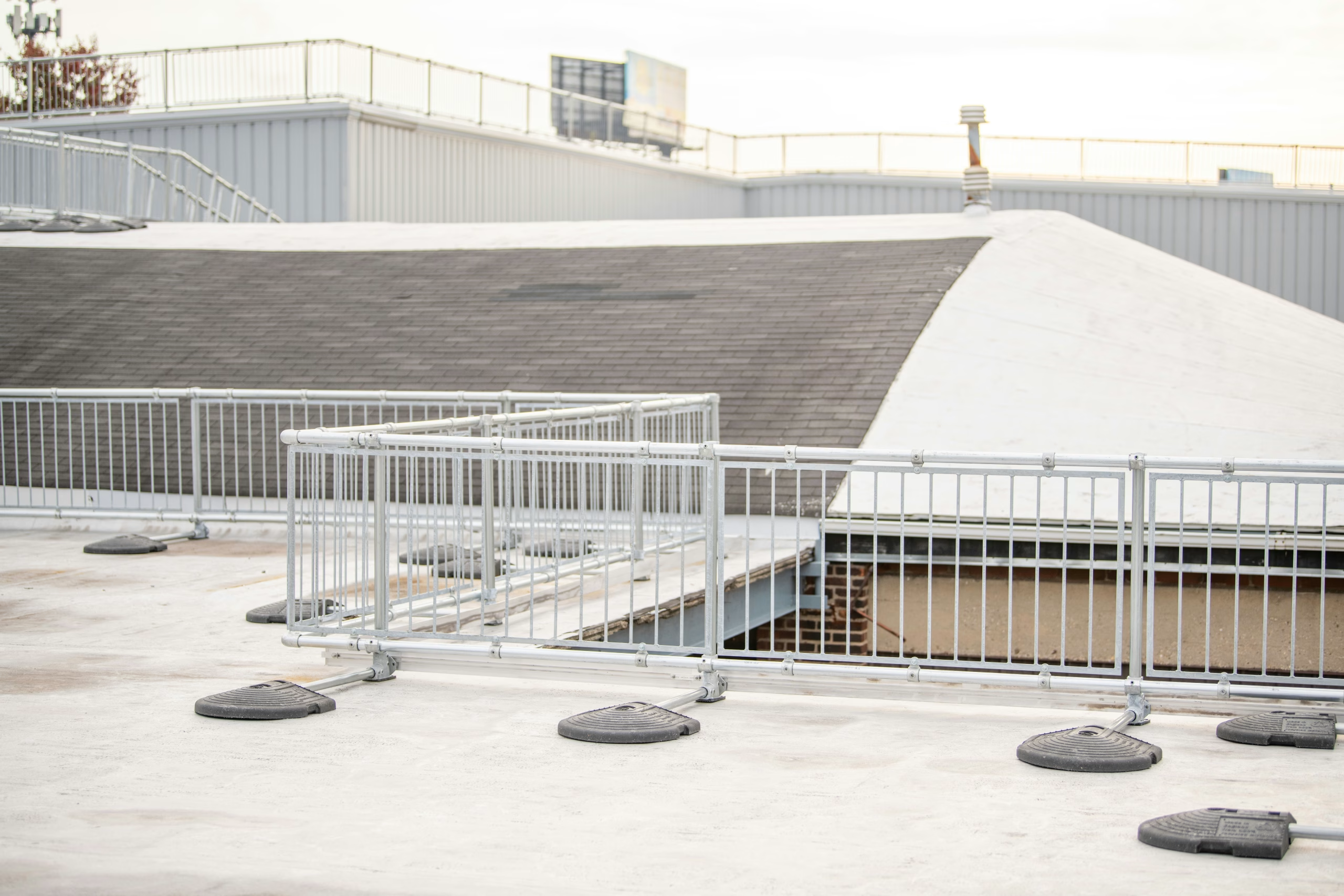
Stainless Steel & Aluminum Post Systems
Product Types
Post railing systems consist of vertical posts commonly stainless steel or aluminum that are anchored to floors or structural bases to support glass infill panels. These systems are widely used in residential balconies, internal staircases, commercial atriums, and public platforms due to their ease of customization and installation. The modular design allows flexibility in layout, making it possible to adapt the railing to straight runs, corners, or curved edges with minimal complexity.
This type of railing is particularly appreciated for its balanced appearance offering visual lightness through the glass while maintaining a clearly defined structure through the posts. It can be equipped with top rails or left rail-free for a cleaner look, depending on building code requirements and aesthetic goals. The use of standardized components also helps reduce installation time and labor costs.
Material
The posts are typically made from corrosion-resistant metals such as 304 or 316-grade stainless steel, or aluminum that is anodized or powder-coated for enhanced weather protection. These finishes help the structure withstand harsh environments, including salty coastal air, industrial pollution, or heavy urban use. Hardware such as clamps, screws, and anchors are often made of the same metal to ensure consistent performance and avoid galvanic corrosion.
Glass panels are most commonly made from tempered or laminated safety glass. Laminated glass adds a layer of safety, as it remains bonded even when shattered. Optional treatments like frosted, etched, or digitally printed finishes allow for additional design options, privacy control, and branding applications.
Aluminum baseshoes are frequently treated with powder coating or anodizing to resist corrosion and UV exposure. Rubber gaskets or compression fittings are inserted between the glass and the channel to absorb shock and ensure a tight, rattle-free fit. Drainage provisions are also built into the channel to manage water runoff in exterior environments.
Load & Safety
A major strength of post railing systems lies in their ability to distribute load evenly. By attaching the glass panels at multiple points—either through mechanical clamps or channel inserts—the weight and force exerted by environmental elements or human interaction are spread across the entire system. This makes post systems highly resistant to impact and deformation.
Safety is engineered into every component. Most systems comply with international codes such as the International Building Code (IBC), European Norm (EN), and local standards. Features like top rails for additional support, anti-climb configurations, and edge protections enhance user safety, especially in high-traffic or elevated zones. Additional options such as childproof spacing between glass panels or handrail integration are available depending on use case.
Maintenance
Post railing systems require relatively low maintenance thanks to the durable nature of their materials. Stainless steel should be cleaned regularly with a soft cloth and pH-neutral cleaner to remove environmental grime or fingerprints, preserving its appearance. Aluminum surfaces, particularly if powder-coated, only need occasional washing with soap and water to stay fresh.
Glass maintenance includes regular cleaning with ammonia-free or alcohol-based products to prevent streaks and mineral buildup. For exterior installations, it’s also advisable to inspect fasteners and anchor bolts seasonally to check for loosening due to vibration or temperature shifts. Well-maintained systems retain their visual appeal and functionality for many years with minimal intervention
Durability
Durability is one of the strongest attributes of post railing systems. With the use of high-grade stainless steel or well-coated aluminum, the structure can withstand wind, rain, UV radiation, and mechanical stress for decades without significant degradation. These materials are not only strong but also recyclable, making them suitable for sustainable building designs.
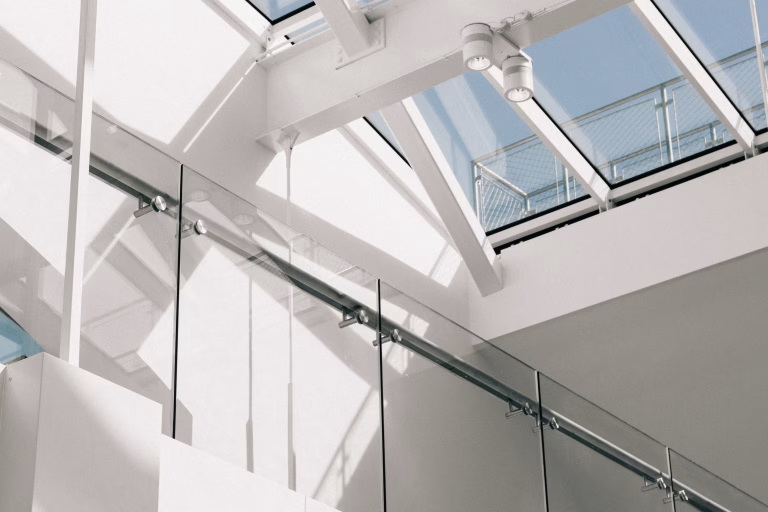
Frameless Systems
Product Types
Frameless railing systems are designed to maximize transparency and achieve a minimalist look by eliminating vertical posts. Instead of using traditional uprights, glass panels are mounted directly into recessed channels or with the help of discreet clamps, creating an open and unobstructed view. This makes frameless systems ideal for high-end residential balconies, scenic terraces, pool surrounds, and commercial atriums where preserving the visual flow is a priority.
The clean lines and minimal hardware of frameless railings make them a favorite among architects and interior designers who want to emphasize openness and natural light.
Material
The main material used in frameless railing systems is high-strength tempered or laminated safety glass. Laminated options include interlayers such as PVB or SGP, which improve durability and post-breakage safety. Edge-polished or CNC-machined glass provides smooth, elegant finishes that complement modern spaces.
For anchoring, frameless systems use aluminum or stainless-steel base profiles that can be recessed into flooring or mounted above grade. These profiles are often finished with anodizing or powder coating to ensure resistance to corrosion. Hidden gaskets, seals, and drainage components are also built in to handle moisture and weather exposure while maintaining a seamless look.
Load & Safety
Despite their subtle appearance, frameless railing systems are engineered to handle significant loads, both static and dynamic. The glass panels are embedded or clamped securely, with structural silicone, pressure plates, or gaskets providing lateral stability.
In terms of safety, laminated glass is typically preferred for overhead or elevated applications. In case of breakage, the interlayer holds the fragments together, reducing the risk of injury. Some frameless systems also include discreet top caps or handrails to meet local regulations regarding graspability or fall protection.
Maintenance
Frameless systems are among the easiest to maintain due to their minimal number of components and exposed surfaces. Glass panels should be cleaned regularly using soft cloths and non-abrasive cleaners to remove dust, water spots, or smudges. Since there are no vertical posts, there are fewer areas for dirt or debris to accumulate.
Aluminum or stainless-steel base channels may require occasional inspection to ensure drainage pathways are clear and fasteners remain secure. In outdoor applications, particularly around pools or coastal areas, more frequent cleaning may be necessary to prevent salt or chlorine buildup on glass and metal parts.
Durability
When built with premium materials, frameless glass railing systems offer long-lasting durability. The tempered or laminated glass is designed to resist temperature fluctuations, impact, and UV exposure without yellowing or degrading over time. Even in direct sunlight or high-humidity environments, the clarity and structural integrity of the glass are maintained.
Proper installation and quality control during fabrication play a major role in long-term performance. With recessed or sealed channels that prevent water intrusion and corrosion, these systems can last for decades without requiring major repairs or replacements. Their timeless appearance and robust performance make them ideal for modern architecture.
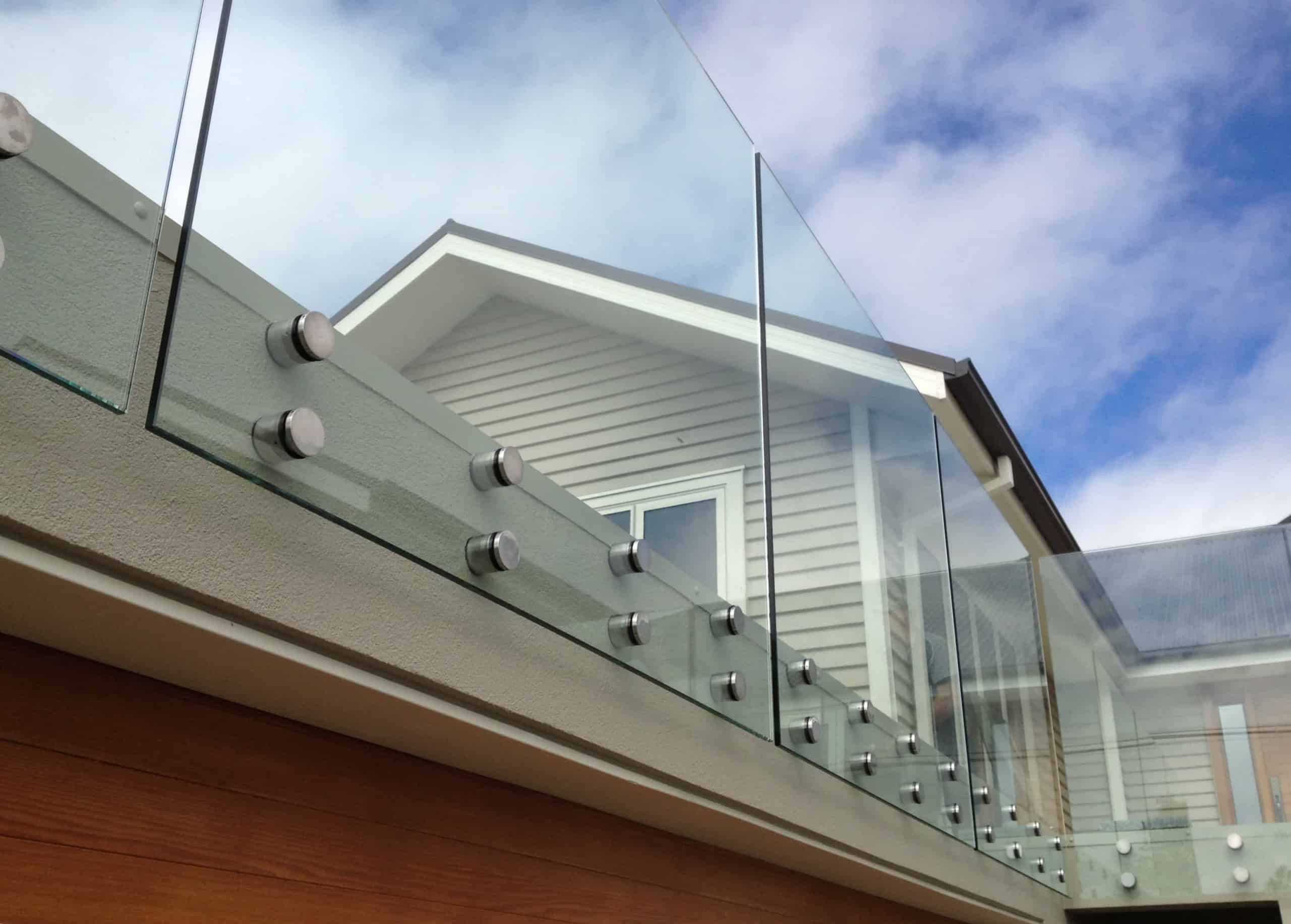
Standoff Systems
Product Types
Standoff railing systems create a “floating” glass effect by securing panels to vertical surfaces using cylindrical metal mounts called standoffs. These mounts attach the glass panels away from the face of the stair, balcony, or slab, resulting in a clean, airy aesthetic. This system is commonly used in staircases, landings, or contemporary balconies where visual minimalism is prioritized.
Design flexibility is a key advantage. Panels can be installed with or without top rails, depending on local codes and user preference. Glass is mounted flush or slightly offset from the edge, which enhances spatial openness while still ensuring safety. Architects often specify standoff systems when both transparency and elegance are design priorities.
Material
Tempered or laminated safety glass is the primary component. For safety and visual refinement, the edges are polished and corners may be rounded. Standoffs are precision-machined from stainless steel often 304 or 316 grade to ensure strength and corrosion resistance.
The hardware is available in multiple finishes, such as brushed, mirror-polished, or powder-coated black, to match interior and exterior design schemes. Depending on the structure, glass may be fixed into masonry, steel, or concrete, requiring specialized anchors for safe load transfer.
Load & Safety
Though visually delicate, standoff systems are structurally sound when correctly engineered. The standoffs anchor the glass at specific points, and load calculations must account for shear, pull-out force, and bending moment.
Laminated glass is often used to prevent fall-through in case of breakage. Additional safety measures may include handrails fixed to the glass or independent support rails depending on jurisdictional regulations. Each component must be tested for fatigue, vibration, and resistance to thermal stress.
Maintenance
Maintenance is simple and primarily focused on cleaning the glass and ensuring fasteners remain tight. The exposed nature of the system makes any dust, debris, or moisture buildup easily noticeable and therefore easy to address. Glass panels can be cleaned with ammonia-free products to preserve clarity.
It is advisable to periodically check the standoffs for signs of loosening, rust spots, or structural shifts, especially in outdoor installations. High-quality stainless steel hardware typically requires little more than occasional wiping and basic maintenance to last for decades.
Durability
Standoff railing systems are exceptionally durable when fabricated with proper materials and mounted correctly. Marine-grade stainless steel offers excellent resistance to salt air, humidity, and pollutants, making it suitable for both coastal and inland applications.
Since the system has fewer elements in contact with horizontal surfaces, water pooling and corrosion risks are reduced. Combined with strong glass and thoughtful detailing, these systems offer lasting performance and a timeless architectural presence.
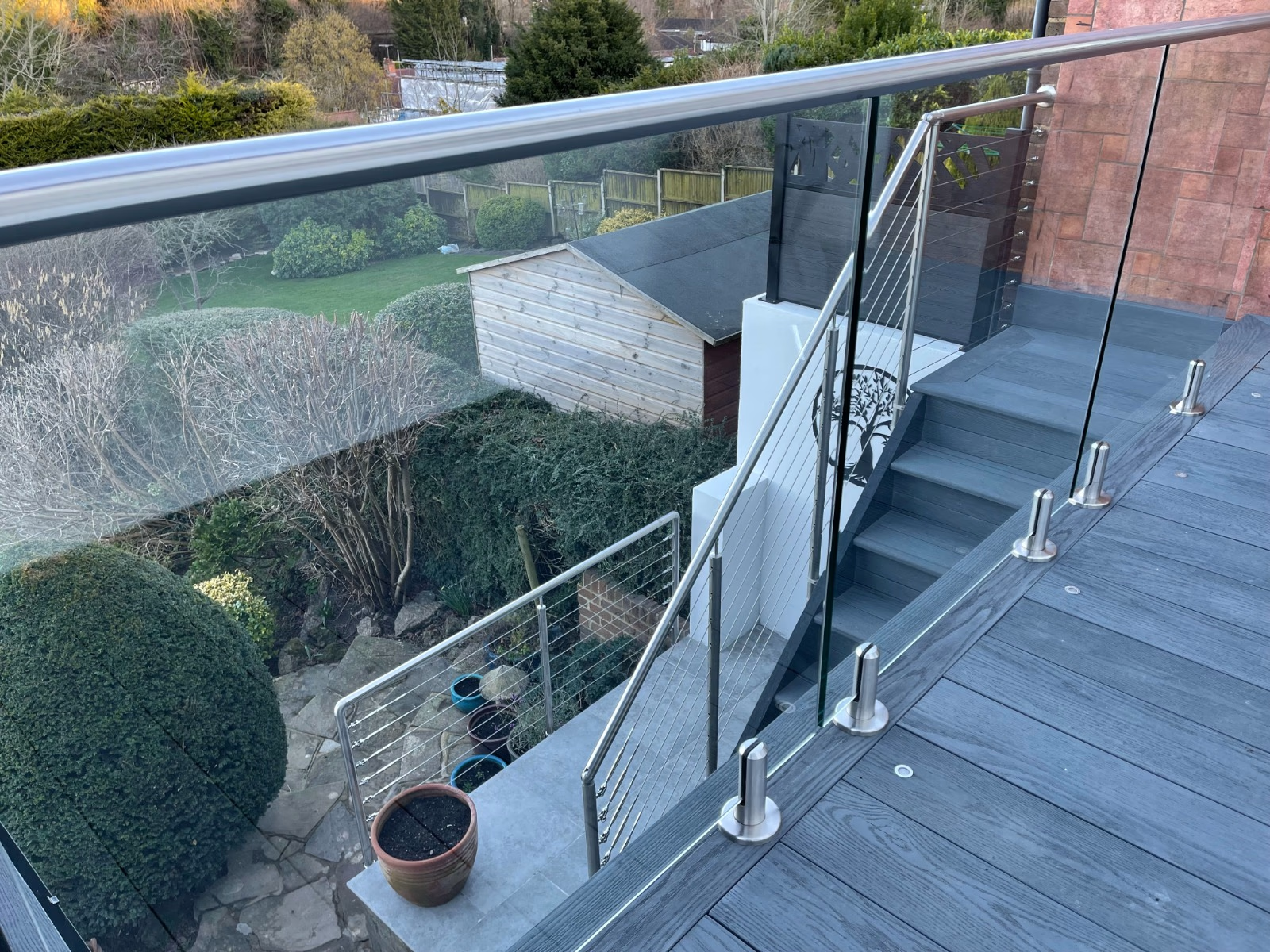
Spigot Systems
Product Types
Spigot railing systems use compact floor-mounted brackets called spigots to support vertical glass panels. These brackets clamp the glass at the bottom without the need for posts or frames, creating a clean and open design that maximizes visibility. Frequently used around pools, rooftop terraces, and luxury patios, spigot systems are a favorite in residential and hospitality projects.
Their modularity allows for rapid installation. Spigots can be placed in concrete, tiles, or wood decking, and spacing is typically optimized to meet load requirements while preserving aesthetic uniformity. Optional top rails can be added when required by local building codes.
Material
Spigots are made from corrosion-resistant stainless steel or anodized aluminum. They come in various profiles—square, round, or oval—and may include adjustment mechanisms for leveling the glass. Rubber gaskets and high-strength bolts are used to secure the glass panels in place without drilling the glass.
Glass panels are generally tempered or laminated safety glass. Options include low-iron glass for greater clarity, or frosted panels for privacy. The simple but robust clamp design accommodates a wide range of glass types and panel sizes.
Load & Safety
Spigot systems are designed to hold glass panels upright under both wind and crowd loads. Each spigot grips the glass at the base, while some designs feature internal clamps or pressure rings for extra grip strength. This ensures secure mounting and consistent alignment across the span of the railing.
As with all glass railing systems, compliance with regional safety standards is essential. Laminated glass is recommended for elevated applications, and where handrails are omitted, thicker glass or reinforced spigots are used. Testing includes resistance to horizontal force, impact, and glass deflection.
Maintenance
Routine maintenance includes cleaning the glass and occasionally tightening the clamping bolts. Depending on the environment, spigots may need occasional polishing or treatment to prevent surface staining. In pool areas or coastal installations, salt and chlorine exposure should be managed with more frequent washing.
Drainage around each spigot base should also be inspected to prevent water accumulation, which can reduce performance over time. Rubber gaskets should be checked annually to ensure compression integrity.
Durability
Spigot systems are highly durable when constructed with marine-grade stainless steel or properly coated aluminum. They perform well in wet environments due to their elevated installation and minimal horizontal surfaces, which limits water retention and corrosion risk.
Their simple structure makes them easy to replace or upgrade, extending their usable life significantly. When installed correctly, they can provide decades of safe, maintenance-friendly performance.

Cable Railing
Product Types
Cable railing systems provide a modern and open look using tensioned stainless steel cables as infill between posts. These systems are ideal for maximizing views and natural light in locations such as decks, terraces, balconies, and interior staircases. The horizontal or vertical cables create a sense of openness while still ensuring user safety.
Designs may include wooden, metal, or composite posts and rails. Because of their flexibility, cable railing systems are often chosen in residential projects or outdoor settings where unobstructed views and airflow are prioritized.
Material
The core of these systems is marine-grade stainless steel cable, usually 1/8″ to 1/4″ in diameter. The cables are attached with threaded terminals, turnbuckles, or swaged fittings, which allow for fine tension adjustments. Posts are made from stainless steel, aluminum, or powder-coated steel.
End and intermediate posts are structurally reinforced to handle cable tension. Top rails may be wood or metal, depending on the design preference and required rigidity. All components are selected for long-term weather resistance and structural strength.
Load & Safety
Cable railings must be tensioned properly to comply with safety standards. Sagging or excessive spacing can create hazards, especially for children. Most codes require a maximum horizontal opening of 4 inches to prevent fall-through.
To resist applied loads, the cables are installed under high tension and supported by solidly anchored end posts. Intermediate posts or cable spacers are used to prevent deflection under pressure. When properly designed and installed, cable systems are as safe as traditional railings.
Maintenance
Cable railing systems require periodic maintenance to retain their appearance and performance. Tension may need to be adjusted seasonally due to thermal expansion or structural movement. Cables and fittings should be inspected regularly for signs of wear or corrosion.
Cleaning is relatively simple: cables can be wiped with a damp cloth, and metal posts cleaned using mild detergent. Avoid using harsh chemicals or abrasives that could damage the stainless surface or compromise mechanical connections.
Durability
Marine-grade stainless steel cables are exceptionally durable and can last for decades in outdoor environments. Their resistance to UV radiation, rain, and salt spray makes them particularly well-suited for coastal or marine applications.
With proper design, tensioning, and care, cable railing systems provide a long-lasting and visually appealing solution that retains its structural integrity even in demanding conditions.
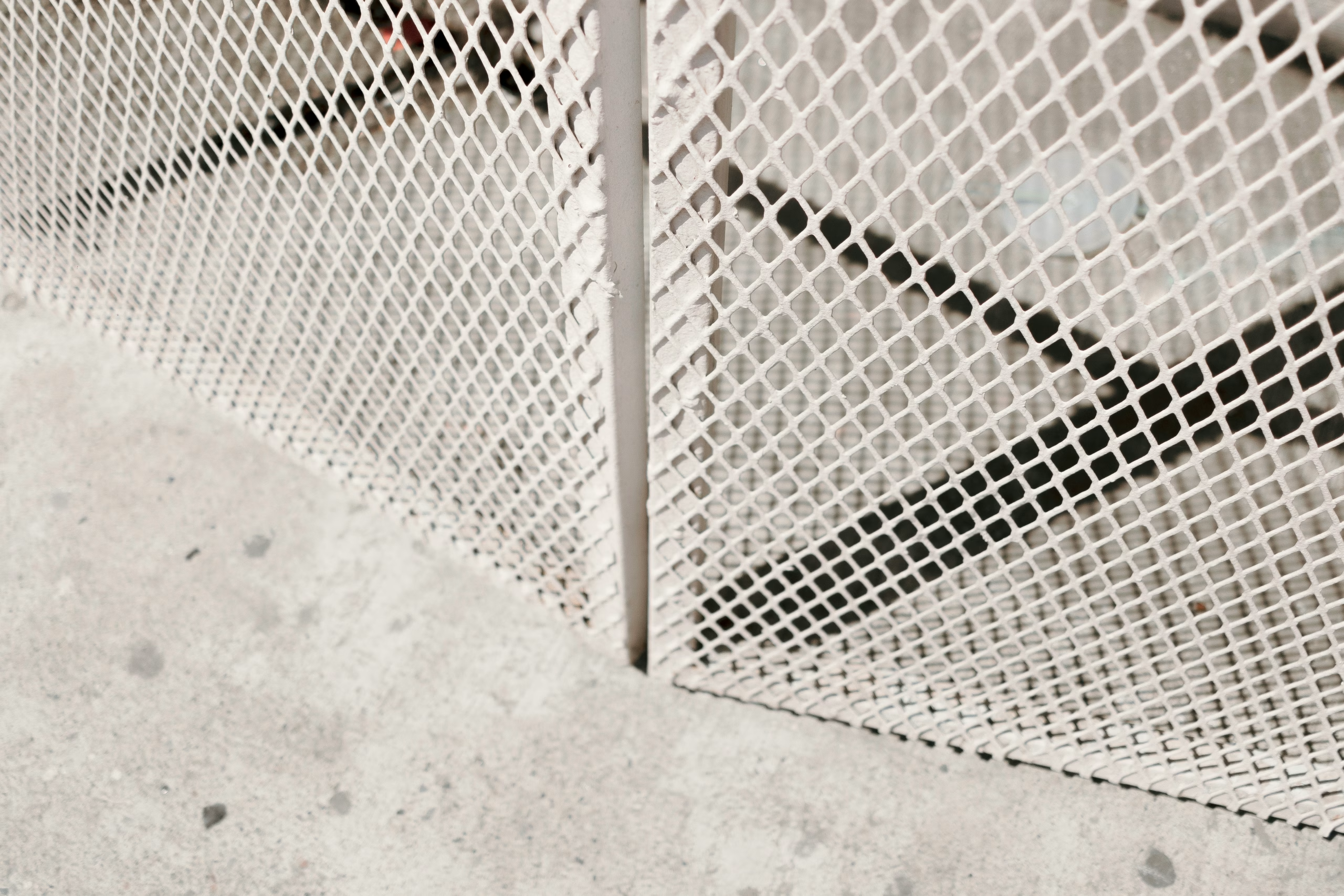
Mesh Railing
Product Types
Mesh railing systems use metal mesh panels as the primary infill component, framed within a metal structure. They offer a modern industrial aesthetic and are commonly used in high-traffic areas like schools, stadiums, transportation platforms, and public walkways. Mesh provides a barrier that is secure and breathable, offering partial transparency and airflow.
Designs may include rigid welded mesh, woven wire mesh, or expanded metal. Panels are mounted within steel or aluminum frames and may be either fixed or removable. Mesh allows for secure enclosure without visual heaviness and is often used for safety and anti-climb protection.
Material
The mesh itself is typically made from galvanized or stainless steel wire. The gauge and aperture size vary based on application—tighter weaves for safety, larger openings for ventilation. Frames and supports are made from powder-coated steel or aluminum for corrosion protection.
Finishes include galvanized, powder-coated or stainless steel in brushed or satin finishes. The selection of material depends on exposure to the elements, aesthetic requirements, and the need for vandal resistance or acoustic dampening.
Load & Safety
Mesh panels are extremely resistant to impact, making them ideal for areas with heavy use or potential vandalism. They also prevent climbing, making them compliant with fall protection codes and child-safety regulations.
Load transfer is achieved through welds or mechanical attachments between the mesh and frame. These connections are engineered to resist dynamic forces and ensure that panels remain intact and in place under stress
Maintenance
Mesh railings are relatively low-maintenance. Occasional cleaning with water or neutral soap removes dust and pollution. Inspections should be made to verify welds, fasteners, and frame alignment.
If powder coating is damaged, touch-up paints can be applied. In stainless steel versions, wiping with a stainless steel cleaner can maintain surface brightness and prevent pitting in outdoor locations.
Durability
Mesh railing systems are highly durable, particularly when using galvanized or stainless mesh with protective coatings. The system can endure UV exposure, moisture, and mechanical abuse for many years without deterioration.
Welded mesh is particularly robust in hostile environments. When properly installed and maintained, mesh railing systems provide dependable safety and visual definition for decades.
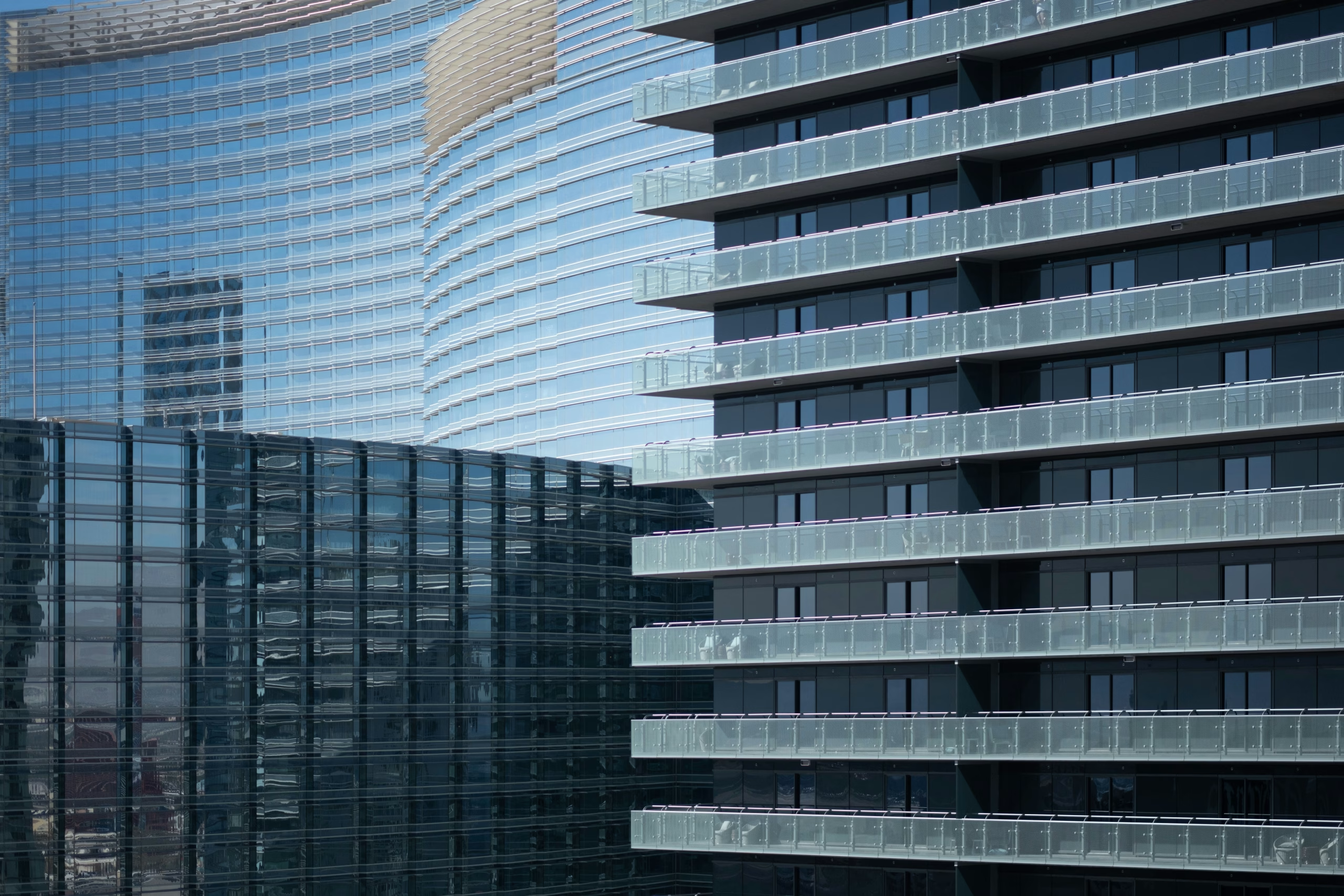
Divider Systems
Product Types
Divider systems are designed to separate or define spaces without completely obstructing views or airflow. Commonly used between residential balconies, in office interiors, or within rooftop terraces, these systems offer privacy while retaining openness and light transmission.
They can be fixed or movable, transparent or opaque, and designed in a wide range of styles from minimalist frameless glass to decorative metal or composite panels. Their function extends beyond safety, often serving acoustic, visual, or wind-shielding purposes.
Material
Divider panels can be made from tempered or laminated glass, perforated metal sheets, composite panels, or high-pressure laminate boards. Glass dividers may include frosted, tinted, or printed designs to enhance privacy or branding.
Frames are typically aluminum or stainless steel, treated for corrosion resistance. Mounting systems may be post-mounted, floor-anchored, or integrated into existing railing lines. The hardware is selected to blend with surrounding architectural finishes.
Load & Safety
Although not usually load-bearing, dividers must be able to withstand lateral forces from wind or incidental contact. Laminated glass is preferred for overhead or fall-exposed areas, and fixings must be structurally certified to prevent detachment.
Dividers used in exterior applications should also include drainage and wind-load engineering. Safety compliance may include childproof height, rounded edges, and shatter-resistance depending on local codes.
Maintenance
Dividers require standard cleaning and periodic inspection. Glass should be cleaned with streak-free solutions, while metal or composite panels may require surface-safe cleaners to preserve color and finish.
Fasteners and mounting bases should be checked occasionally for stability, especially on rooftops or exposed balconies where wind forces are strong. Recoating or minor adjustments may be needed after extended exposure.
Durability
When constructed from quality materials, divider systems are highly durable and weather-resistant. They are designed to withstand moisture, UV radiation, and temperature swings without deformation or discoloration.
Laminated glass and coated metals maintain their appearance and function over time. Their combination of privacy, elegance, and durability makes them an essential architectural element in many modern projects.
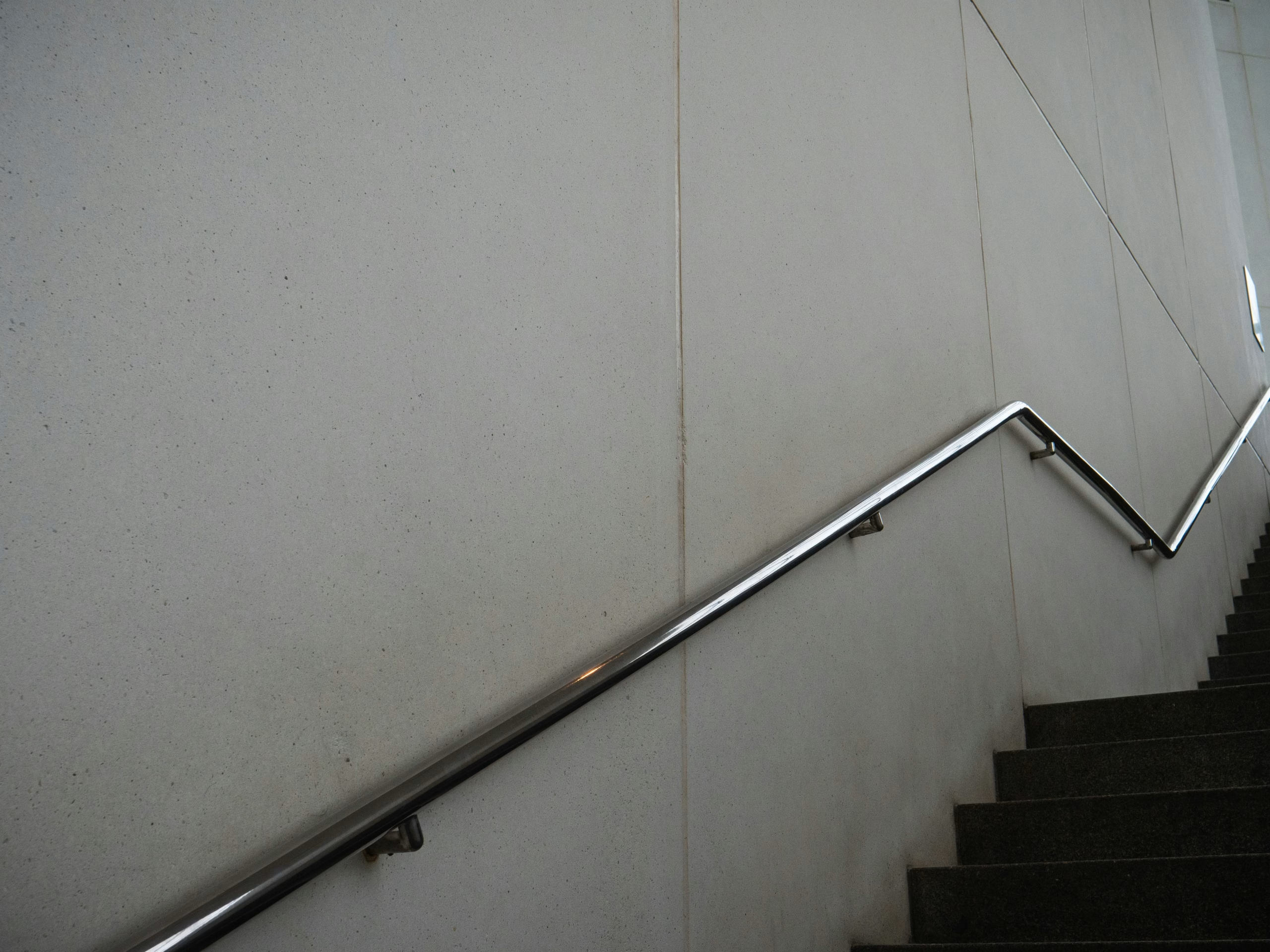
Handrail Systems
Product Types
Handrail systems are designed to provide safe and ergonomic support along stairs, ramps, balconies, and terraces. They can be wall-mounted or post-mounted and are available in a wide range of styles, from sleek minimalist stainless steel tubes to warm wooden designs or glass-integrated options. These systems not only enhance safety but also complement the architectural aesthetics of residential, commercial, and public spaces.
Depending on the application, handrails may feature continuous runs for uninterrupted gripping, or segmented sections that integrate with guardrails or balustrades. Some systems incorporate decorative elements or lighting for added functionality and visual appeal. Handrails are essential components in both new constructions and renovation projects, ensuring safe movement and code compliance.
Material
Common materials for handrail systems include stainless steel, aluminum, tempered glass, and treated hardwood. Stainless steel is highly durable and corrosion-resistant, making it ideal for both interior and exterior applications. Aluminum offers lightweight strength with excellent resistance to weathering, often enhanced by powder coatings. Wooden handrails provide natural warmth and texture but require regular maintenance to protect against moisture and UV damage.
Glass is frequently used as an infill material combined with metal handrails to create transparent and modern designs. Surface finishes range from brushed and polished metals to matte and textured coatings, chosen to suit the intended environment and design style. Mounting hardware is usually crafted from durable alloys designed to withstand mechanical stresses and environmental exposure.
Load & Safety
Handrails must comply with local building codes specifying height, diameter, and load resistance to ensure user safety. They are engineered to resist significant lateral forces and provide continuous gripping surfaces that prevent slips and falls. The profile of the handrail is designed to be comfortable to hold, typically between 1.25 and 2 inches in diameter, and often features rounded edges to avoid injury.
Safety considerations also include appropriate spacing and height to prevent accidents, particularly for children and elderly users. Handrails in public or commercial buildings may have additional requirements such as slip-resistant coatings or illuminated elements to improve visibility. Rigorous testing ensures that these systems maintain their structural integrity under dynamic and static loads.
Maintenance
Regular cleaning and maintenance are crucial for preserving both the appearance and safety of handrail systems. Stainless steel and aluminum surfaces should be cleaned with mild detergents and non-abrasive cloths to prevent corrosion and maintain shine. Wooden handrails require periodic refinishing or sealing to protect against moisture and environmental degradation.
Fasteners, brackets, and mounting bases need to be inspected periodically for looseness, corrosion, or damage, especially in outdoor or high-traffic areas. Timely repairs and adjustments help prevent accidents and prolong the lifespan of the system. Routine upkeep also helps maintain compliance with safety regulations over time.
Durability
When constructed with quality materials and proper finishes, handrail systems offer excellent durability and weather resistance. Stainless steel resists rust and mechanical wear, while treated hardwoods maintain their structural integrity and aesthetic appeal when regularly maintained. Powder-coated aluminum also stands up well to UV radiation and moisture.
Handrails designed for exterior use are engineered to withstand temperature fluctuations, wind, rain, and other environmental stresses without warping, fading, or corroding. With proper installation and care, these systems provide safe, reliable support and an attractive architectural feature for many years.
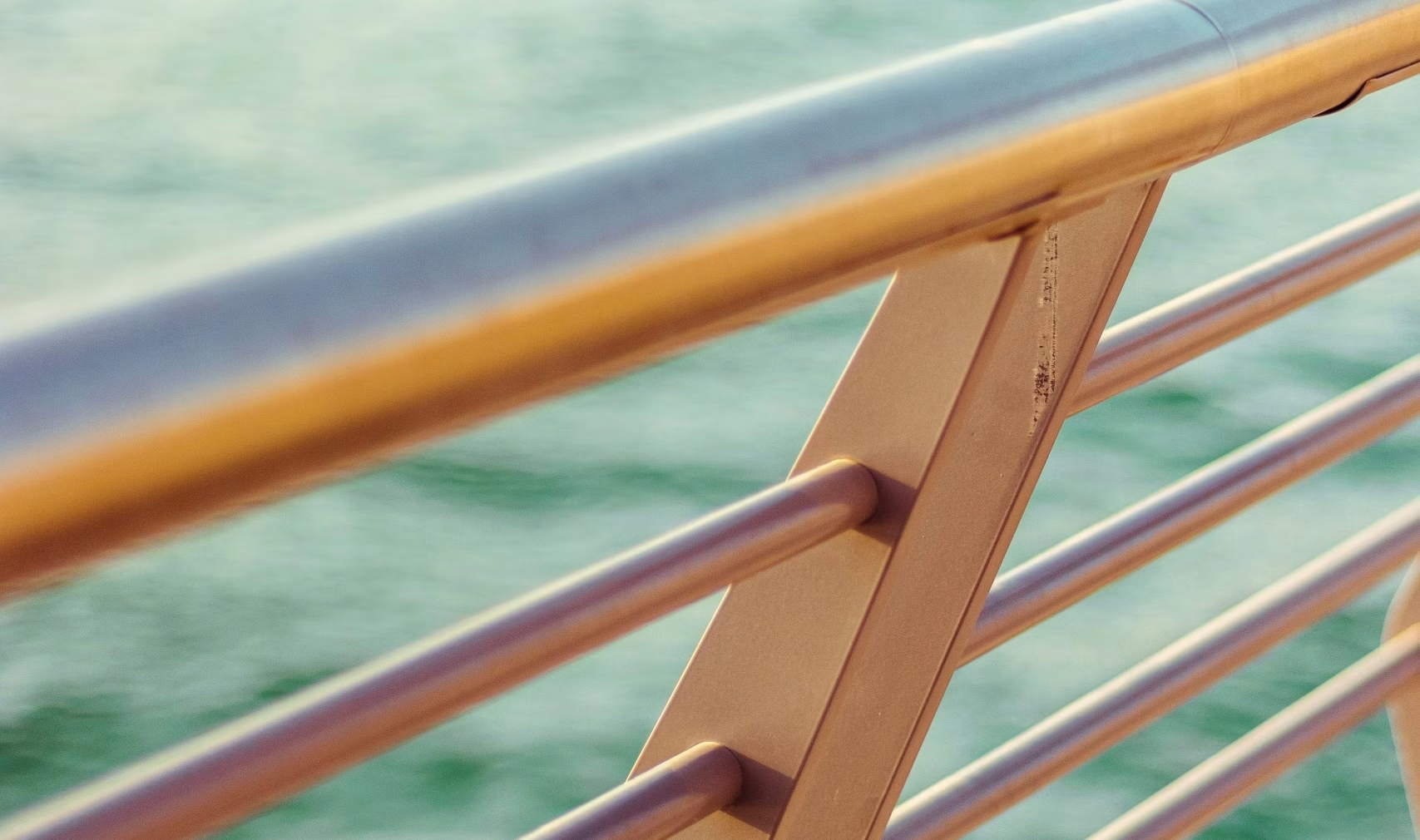
Custom Railing
Product Types
Custom railing solutions are tailored to meet specific project requirements, combining unique design elements, materials, and finishes that standard products cannot offer. These can range from intricately wrought iron patterns with ornate detailing to sleek, modern glass and metal combinations. Custom railings are ideal for projects that demand architectural uniqueness or branding integration.
Beyond aesthetics, custom railings can incorporate specialized functional features such as child-safe designs, anti-climb profiles, integrated lighting, or bespoke shapes and dimensions. This flexibility allows architects and designers to create railings that perfectly complement the building’s style and user needs, whether for residential, commercial, or public spaces.
Material
Custom railings can be fabricated from a broad spectrum of materials, including stainless steel, wrought iron, brass, glass, wood, and composites. Material selection is driven by durability requirements, environmental conditions, and desired visual effects. Finishes vary widely and may include powder coating, electroplating, hand painting, or natural patinas to achieve the perfect look.
Each material demands specific maintenance and engineering considerations; for example, wrought iron is valued for its classic elegance but requires rust prevention treatments, while stainless steel offers a sleek, low-maintenance finish. Glass panels may be laminated or tempered for safety, allowing for transparent or semi-transparent infill designs.
Load & Safety
Custom railing designs must be engineered and tested to comply with all applicable safety codes and structural requirements. Because these designs often feature non-standard shapes or decorative elements, thorough load-bearing analyses are critical to ensure performance under wind loads, impact, and user interaction.
Additional safety features can be incorporated as needed, such as narrow gaps to prevent child entrapment, anti-slip coatings on handrails, or reinforced mounting systems to enhance stability. All fixings and connections are engineered to prevent failure, and design documentation typically includes detailed structural calculations.
Maintenance
Maintenance requirements for custom railings depend on the materials and finishes used. Metal railings, especially those with intricate details, require routine inspection and touch-ups of protective coatings to prevent corrosion. Glass infills need careful cleaning with appropriate solutions to avoid scratches or clouding.
Regular inspections focus on structural components, including welds, fasteners, and anchor points, to detect early signs of wear or damage. Timely maintenance preserves both safety and aesthetics, and bespoke designs often include service agreements or maintenance plans tailored to the specific materials used.
Durability
With careful material choice and expert fabrication, custom railings are highly durable and capable of withstanding harsh weather, UV exposure, and mechanical wear. Protective finishes such as galvanization or powder coatings greatly extend service life and minimize maintenance efforts.
Custom railings can also be designed for easy repair or upgrade, ensuring their longevity as building styles and functional needs evolve. Their combination of personalized design and lasting performance makes them valuable architectural features.
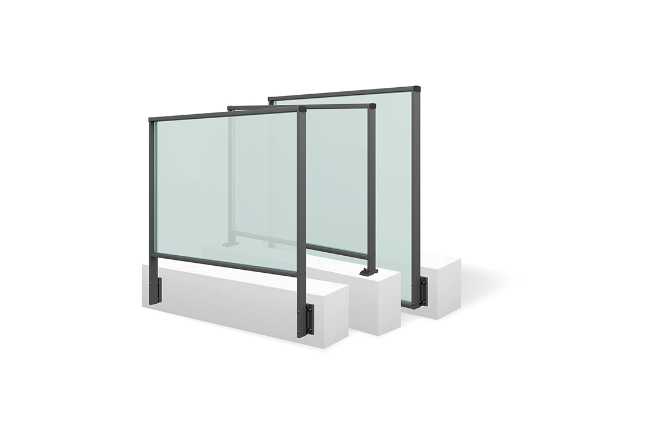
Modular Railing
Product Types
Modular railing systems are composed of prefabricated components that can be quickly and flexibly assembled on site. They usually consist of standardized posts, panels, handrails, and connectors, allowing for easy scalability and adaptability to different project dimensions and layouts. These systems are commonly used in both commercial and residential projects due to their efficiency and versatility.
The modular nature allows for a variety of infill options such as glass, metal bars, mesh, or composite panels. This flexibility supports a wide range of architectural styles and functional requirements, from fully transparent balustrades to privacy screens. Modular railings simplify installation and reduce labor costs while maintaining high safety standards.
Material
Modular railing components are typically made from aluminum, stainless steel, tempered glass, or durable composite materials. These materials are chosen for their corrosion resistance, structural strength, and ability to be manufactured to precise tolerances. Powder coatings or anodized finishes protect metals from environmental damage and provide a consistent aesthetic.
Interchangeable parts and uniform connectors enable easy replacement or reconfiguration of sections. Glass panels are often laminated for safety and may come in clear, frosted, or tinted varieties. The standardization of materials and finishes ensures compatibility and quality across different modules.
Load & Safety
Because modular railings use engineered, repeatable components, they are rigorously tested to meet or exceed local safety and structural codes. Their design accounts for lateral forces from wind and human contact, with locking mechanisms and secure fasteners to prevent accidental disassembly.
The modular design ensures uniform load distribution and structural integrity, which contributes to reliable performance over time. These systems are suitable for both low- and high-traffic areas, including balconies, staircases, and rooftop terraces, where safety is paramount.
Maintenance
Maintenance of modular railing systems is straightforward thanks to their component-based design. Damaged or worn parts can be easily replaced without dismantling the entire system. Routine cleaning of metal surfaces and glass panels helps maintain appearance and performance.
Inspection of connectors, fasteners, and mounting points is essential to ensure ongoing safety, especially in outdoor environments exposed to harsh weather or heavy use. The modular design also allows for easy upgrades or adaptations as building needs change.
Durability
High-quality modular railings are built to resist corrosion, UV radiation, and mechanical wear. Powder-coated aluminum and stainless steel maintain their finish and strength over long periods, while laminated glass panels stay clear and intact.
Designed for longevity, these systems can withstand environmental stresses such as wind, rain, and temperature fluctuations without losing functionality or aesthetics. Their flexibility and durability make modular railings a practical and lasting choice for many architectural applications.
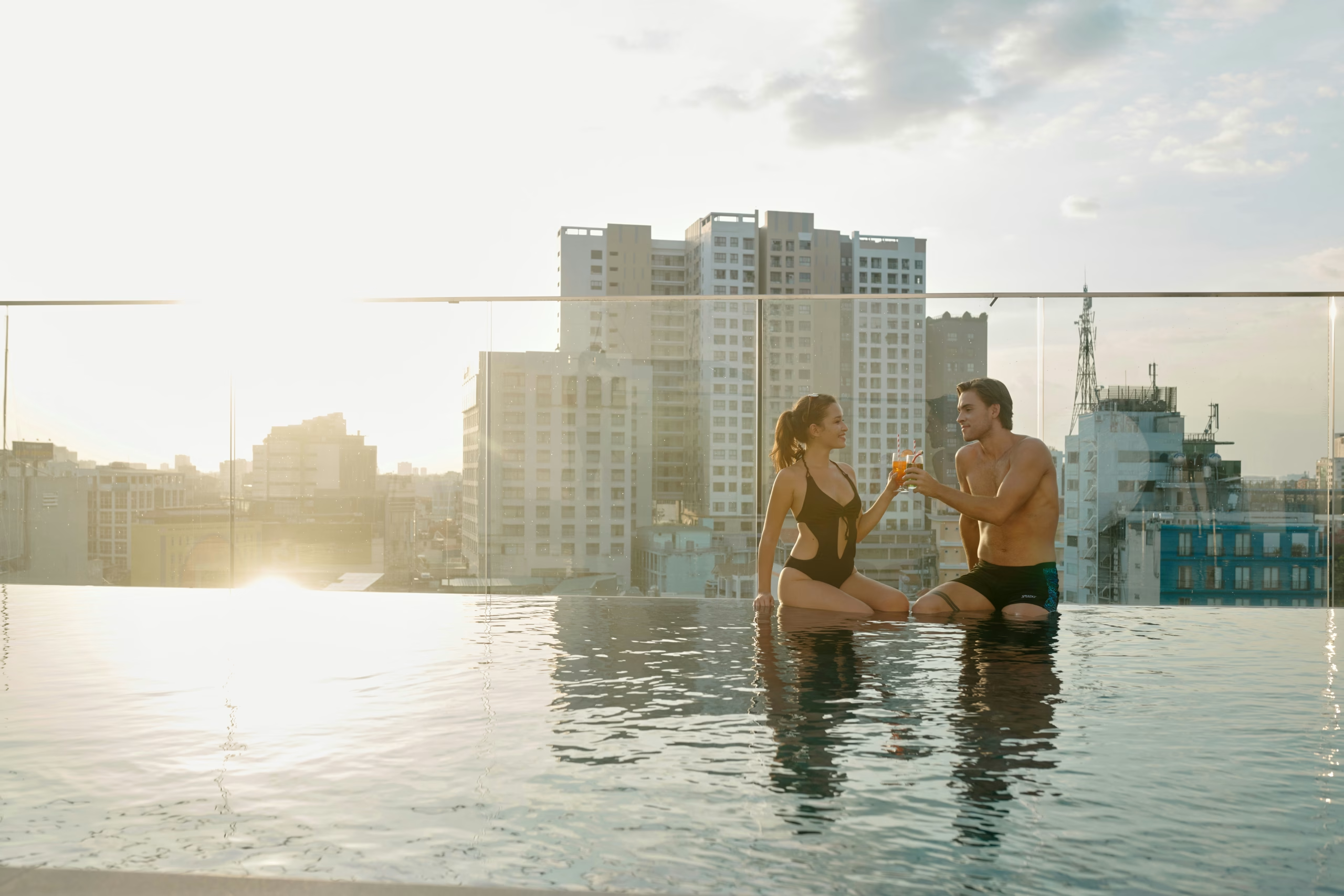
Windscreen
Product Types
Windscreen railings combine safety barriers with wind protection, making them ideal for balconies, terraces, and rooftop spaces exposed to strong winds. Typically, these systems feature tall glass panels or perforated metal screens integrated within a railing framework to reduce wind impact while preserving views.
Designs can vary from fully transparent laminated glass panels that block the wind without obstructing sightlines, to decorative perforated metal panels that provide partial shielding and aesthetic texture. Windscreen railings can also include additional functional elements like integrated handrails, lighting, or planter boxes.
Material
The most common materials for windscreen railings are laminated or tempered safety glass and corrosion-resistant metals such as stainless steel or powder-coated aluminum. Glass panels may be clear, frosted, tinted, or treated with anti-reflective coatings, depending on privacy and glare control requirements.
Metal screens are typically made from perforated steel or aluminum sheets with various hole patterns designed to reduce wind speed while allowing airflow. Frame materials are chosen for structural strength and durability, with finishes that resist weathering, corrosion, and UV degradation
Load & Safety
Windscreen railings must be engineered to withstand significant wind loads, which vary by location and height. Laminated glass is preferred for its shatter-resistant properties and ability to safely contain broken shards in case of impact. Metal panels are designed for rigidity and resistance to deformation.
Mounting hardware is reinforced and carefully anchored to the structure to prevent detachment under heavy wind pressure. Compliance with local safety codes is essential, including appropriate height and infill specifications to prevent falls or accidents while maximizing wind protection.
Maintenance
Glass components require regular cleaning with non-abrasive, streak-free solutions to maintain transparency and visual clarity. Metal parts should be inspected periodically for signs of corrosion, paint peeling, or structural damage, especially in coastal or industrial environments where corrosion risks are higher.
Drainage systems and sealing elements must be maintained to prevent water accumulation that can accelerate deterioration. Routine inspections and timely repairs help ensure the windscreen railing system continues to provide safety and comfort.
Durability
Windscreen railing systems are built to endure harsh outdoor conditions, including high winds, rain, UV exposure, and temperature fluctuations. Laminated glass and powder-coated metals retain their integrity and appearance over time, resisting cracking, fading, or rust.
The combination of safety, durability, and comfort enhancement makes windscreen railings a critical element for outdoor living spaces exposed to the elements. Proper installation and maintenance ensure their long-term performance and user satisfaction.
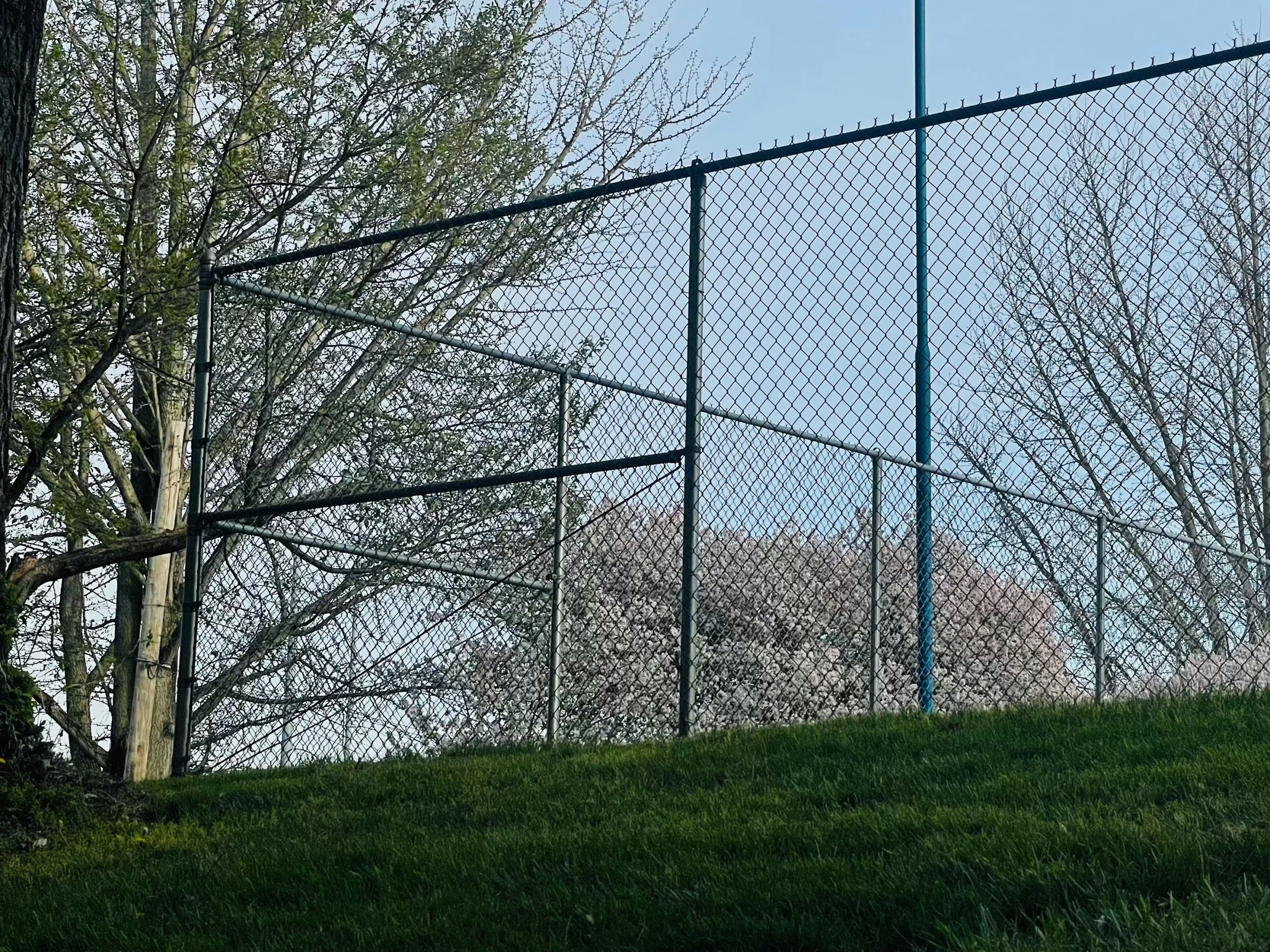
Fence Systems
Product Types
Garden fences serve to define outdoor spaces, provide privacy, enhance security, and contribute to the overall landscape aesthetic. They come in various styles such as traditional picket fences, lattice panels, horizontal slats, and decorative metal or composite panels. Fences can be fully opaque or partially open to balance privacy and visibility.
Depending on the setting, garden fences may be designed for containment (pets, children), security (deterrent to trespassing), or purely ornamental purposes. Some fences integrate gates, trellises, or planter boxes to increase functionality and visual appeal within garden environments.
Material
Wood is a classic material for garden fences, commonly using cedar, pine, or treated hardwoods valued for their natural beauty and resistance to decay. Metal options include wrought iron, aluminum, and galvanized steel, which offer longevity and minimal maintenance with proper coatings.
Vinyl and composite fences have grown popular for their low maintenance, resistance to rot, insects, and weathering. These materials can mimic the appearance of wood or metal while providing enhanced durability and ease of cleaning. The choice of material affects not only aesthetics but also lifespan and upkeep.
Load & Safety
Garden fences must be structurally sound to resist wind loads and accidental impact, especially in exposed or high-traffic areas. Local regulations may specify maximum fence heights and spacing to ensure safety and neighbor compliance.
Security fences often include locking gates, reinforced posts, or anti-climb features, while fences intended for child or pet containment focus on minimizing gaps and sturdy construction. Proper anchoring and foundation are essential to maintain fence stability over time.
Maintenance
Wooden fences require periodic staining, sealing, or painting to protect against moisture damage, UV exposure, and insect attack. Metal fences benefit from rust prevention treatments and occasional repainting or touch-ups to maintain protective coatings.
Vinyl and composite fences mainly require simple cleaning with water and mild detergents to remove dirt and prevent mold or mildew. Regular inspections identify loose boards, broken posts, or damage caused by weather or animals, allowing for timely repairs.
Durability
With proper installation and maintenance, garden fences can last many years, preserving both their function and appearance. Treated wood and coated metals resist decay and corrosion, while vinyl and composite fences offer exceptional resistance to environmental factors with minimal upkeep.
Material choice and construction quality are key to durability, ensuring fences withstand seasonal temperature changes, moisture, and mechanical wear. A durable garden fence not only protects and defines the outdoor space but also adds value and beauty to the property.
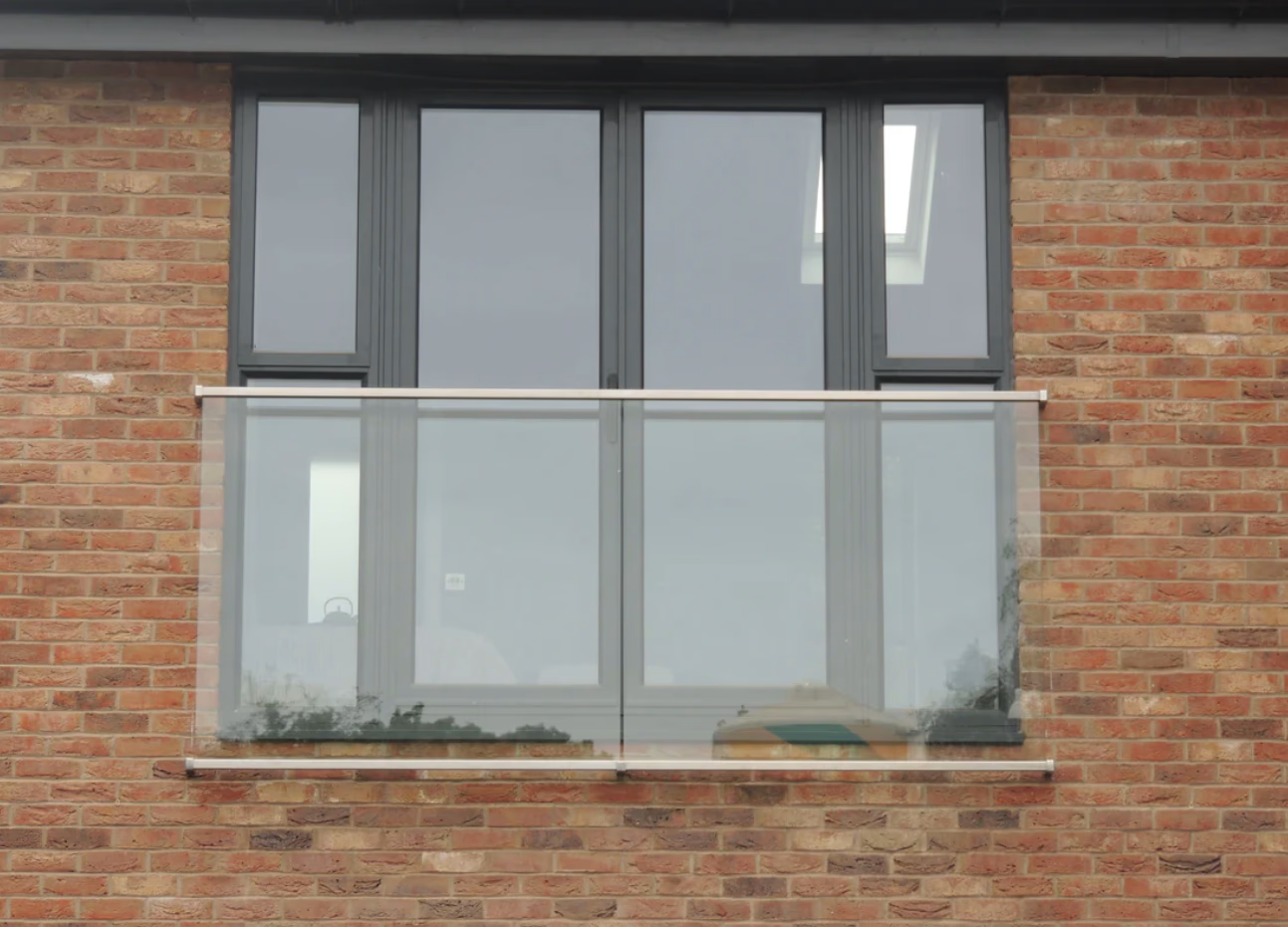
Juliet Balcony
Product Types
A Juliet balcony is a shallow, non-projecting balcony system typically installed in front of full-height windows or French doors on upper floors. Unlike traditional balconies, it doesn’t offer a walk-out platform but functions as a safety feature that allows doors or windows to open while preventing falls. This type of balcony provides the feel of an outdoor space without requiring structural extensions or significant floor area.
Juliet balconies are often used in residential and mixed-use developments to maximize light, air circulation, and architectural detail. They are popular in both classic and contemporary designs—ranging from ornate wrought iron railings to sleek, frameless glass panels. These systems serve both a practical and decorative purpose, enhancing building facades while complying with safety regulations.
Material
The most commonly used materials for Juliet balconies include wrought iron, stainless steel, powder-coated aluminum, and laminated or tempered glass. Wrought iron is frequently chosen for its intricate, timeless aesthetic, especially in traditional architecture. In contrast, stainless steel and aluminum offer a modern, minimalist appearance and are particularly suitable for low-maintenance, weather-resistant applications.
Glass Juliet balconies, especially those using frameless laminated glass, are gaining popularity in modern buildings. They offer maximum visibility, uninterrupted views, and a clean aesthetic. Depending on the design, materials may be combined—for example, glass infills secured with metal side brackets—to create both structural stability and a refined visual impression. All components are selected to withstand environmental exposure and maintain long-term performance.
Load & Safety
Although Juliet balconies are not designed to support live loads like traditional balconies, they must comply with building codes regarding fall protection. These codes typically regulate the minimum height, the spacing of any horizontal or vertical infill elements, and the strength of mounting hardware. Even in purely aesthetic applications, structural performance is critical to ensure occupant safety.
Laminated safety glass is often required in frameless designs to prevent breakage hazards, while metal systems must be securely anchored to the building’s structure. Additional safety features can include child-safe designs, rounded edges, or anti-climb profiles depending on location and building type. Regular testing and certification ensure the balcony system can safely resist wind pressure and accidental impacts.
Maintenance
Maintenance needs depend heavily on the material used. Metal Juliet balconies—especially those exposed to the elements—should be periodically inspected for signs of rust, corrosion, or paint deterioration. Protective coatings like galvanization or powder coating help reduce maintenance frequency, but touch-ups or repainting may be needed over time, particularly in coastal or industrial environments.
Glass Juliet balconies should be cleaned regularly with non-abrasive cleaners to preserve clarity and avoid staining or mineral deposits. All fasteners and mounting points must be inspected for loosening or fatigue, especially after extreme weather. Preventative maintenance not only extends the lifespan of the balcony but also ensures continued safety and structural reliability.
Durability
When constructed with high-quality materials and proper finishes, Juliet balconies are exceptionally durable and suitable for long-term use in both interior and exterior environments. Stainless steel and aluminum resist corrosion and UV degradation, while properly coated wrought iron can endure decades with regular upkeep.
Laminated glass infill panels are engineered to withstand high wind loads and temperature fluctuations without cracking or discoloring. With minimal mechanical stress and careful installation, Juliet balconies maintain their function and appearance for years. Their combination of visual appeal, ventilation benefits, and safety makes them a sought-after feature in modern architecture.




